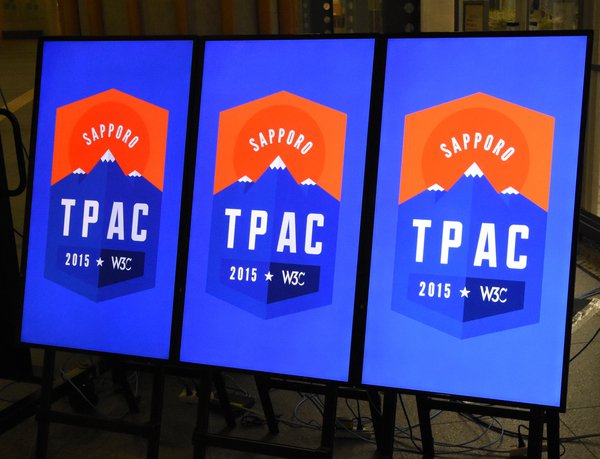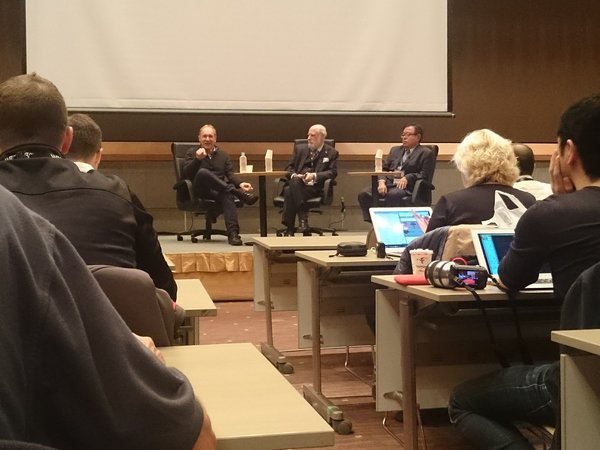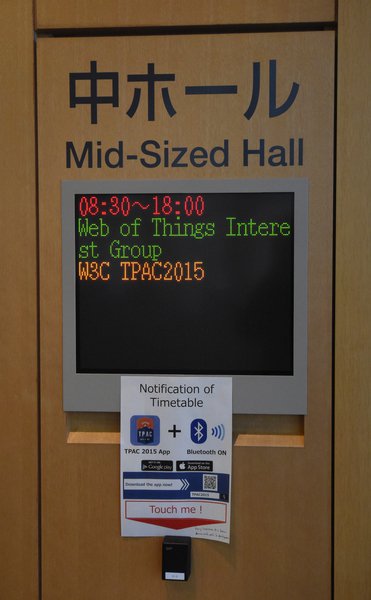Filter by topic and date
Visiting the W3C Meeting
- Jari Arkko IETF Chair
- Heather Flanagan
- Barry Leiba
- Karen O'Donoghue
29 Oct 2015
Both the IETF and the W3C are meeting in Japan this month.

The W3C TPAC meeting is going on this week in Sapporo, and the IETF meeting is beginning next week in Yokohama. Given the proximity of the gatherings and the technical topics, many people are attending both. This was the first visit to the W3C for some of us, and we wanted to share our experiences and point out important work that crosses organisations.
The IETF and W3C have of course historically worked closely together, and even though our work methods differ, we share a very similar worldview in collaborating to build better web technology. Many current developments are likely to require more systems-level understanding and collaboration, for instance, improvements in security and privacy, or supporting interoperable Internet of Things applications.
To increase cross-pollination, both organisations had made an offer for reduced registration fees for new participants from the other meeting. On the W3C side 9 new people and on the IETF side 15 new people took advantage of that offer.
W3C Meetings
To a new attendee who is used to how the IETF works, the W3C model appears to be that work is done throughout the year with teleconferences (it is common for W3C groups to have weekly teleconferences) and by having working groups scheduling their own face-to-face meetings. A lot of the work also happens offline, for instance in open source repositories and informal groups. At the W3C plenary meeting (TPAC, once a year) there is often a lot of status reporting and general discussion. But at the TPAC, working groups will meet for one or two entire days rather than just for one or two hours. Having all-day working group sessions means that more work can get done, but it makes it very hard to participate in multiple working groups: one has to use the agendas to decide when to switch back and forth, and one misses a lot of the discussion.
While most of the IETF week is spent in working group meetings, at the TPAC there is a full day reserved for the plenary. This time the plenary started with Tim Berners-Lee, Vint Cerf, and Jun Murai having a panel discussion about the future of the web and the Internet. One of the issues they discussed was how to build support for a more trustworthy web. What is missing from the enabling protocol space to make strong authentication, high integrity, and other trust building mechanisms better available? Vint suggested that this is a topic that the W3C and IETF should discuss together.

The other notable thing about the W3C meeting week is that there is quite a lot of time reserved for unstructured discussions and parallel breakouts both for new topics and topics within a working groups. A big part of the plenary day is in the “unconference” format, in which topical sessions are proposed on a meeting wiki. Scheduling some unstructured discussion time may be something worth thinking about in the IETF as well.
W3C uses “Interest Groups” to start work that isn’t ready to be in a Working Group. Some of the ones to follow include the Privacy, Web and TV, Digital Publishing Interest Groups. The Web Payments Working Group has recently been chartered based on work started in the Web Payments Interest Group.
Interaction with the IETF
The most notable case of joint work between the W3C and the IETF is WebRTC, which is joint work with the IETF RTCWeb working group. But there are other W3C working groups that are chartered to work with the IETF, for instance the Web Applications, Web Performance, Web Platform, Geolocation, Internationalization (I18N), Web Application Security, and Web Cryptography groups. Some work in the IETF (such as WEBPUSH) has been triggered by needs of W3C work. There’s also a healthy overlap in participation and functional liaison relationship between the two organisations.
Web of Things
Internet of Things was a hot topic also at the W3C meeting. The Web of Things (WoT) Interest Group has two full days of sessions on Thursday and Friday, and also multiple joint sessions with other groups earlier during the week. The starting point for the group’s work is the desire to improve interoperability at the higher layers and applications, and not just in the underlying protocols. What can be done to make the web a platform that better supports building cross-domain applications, and connecting components from multiple sources?
The top three building blocks for combining the Web and IoT worlds being worked by the group are “scripting API and protocol mappings”, “thing discovery”, and “thing description”. Each of these topics has its own task force, and a fourth task force is looking into “security, privacy, and resilience” aspects that are naturally highly important for WoT. As is often the case with W3C work, APIs can be created for browsers to support new types of web applications. Finding the right model to allow such APIs to discover and communicate with objects is of course crucial.
The WoT group is finalising now the technology landscape scanning for relevant and suitable technologies and many familiar IETF protocols and formats have been extensively discussed in the group (e.g., HTTP, CoAP, WebSockets, CoRE link format, and SenML). The mechanisms specified at the IETF have so far been good building blocks, but when the W3C group moves forward, we are likely to find missing pieces that require more standardization work. At that moment it is important to coordinate between the IETF and W3C so that the right work gets done. Fortunately there is again a healthy overlap with participants, so we expect the information to flow well between the two organisations. In particular, the IRTF Thing-to-Thing proposed Research Group (T2TRG) will have a joint meeting with the W3C WoT group on the weekend before the IETF meeting.
